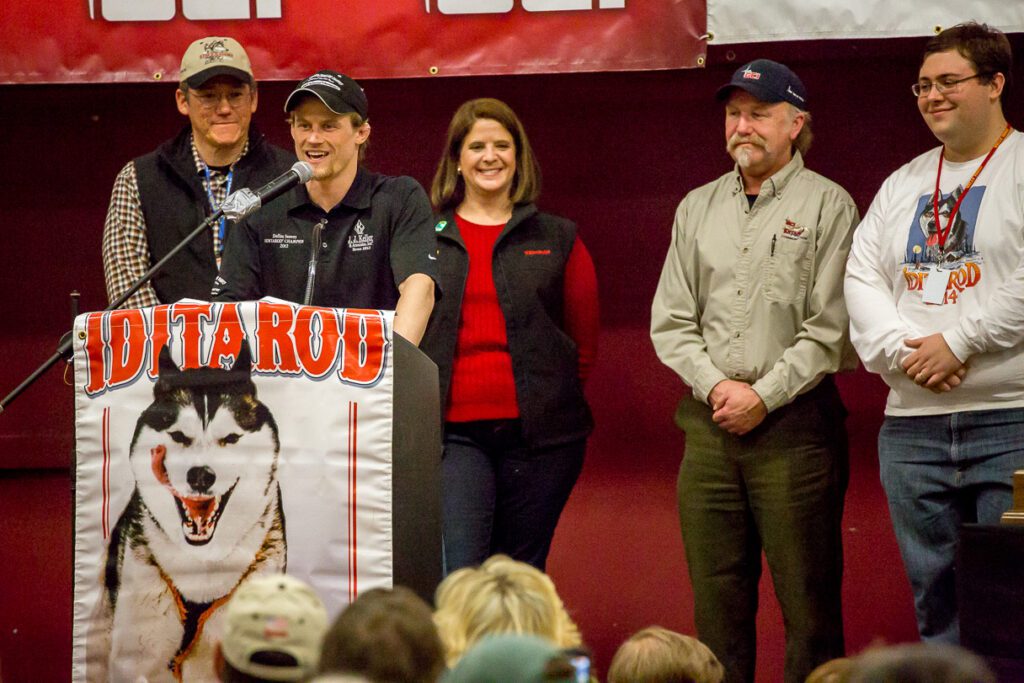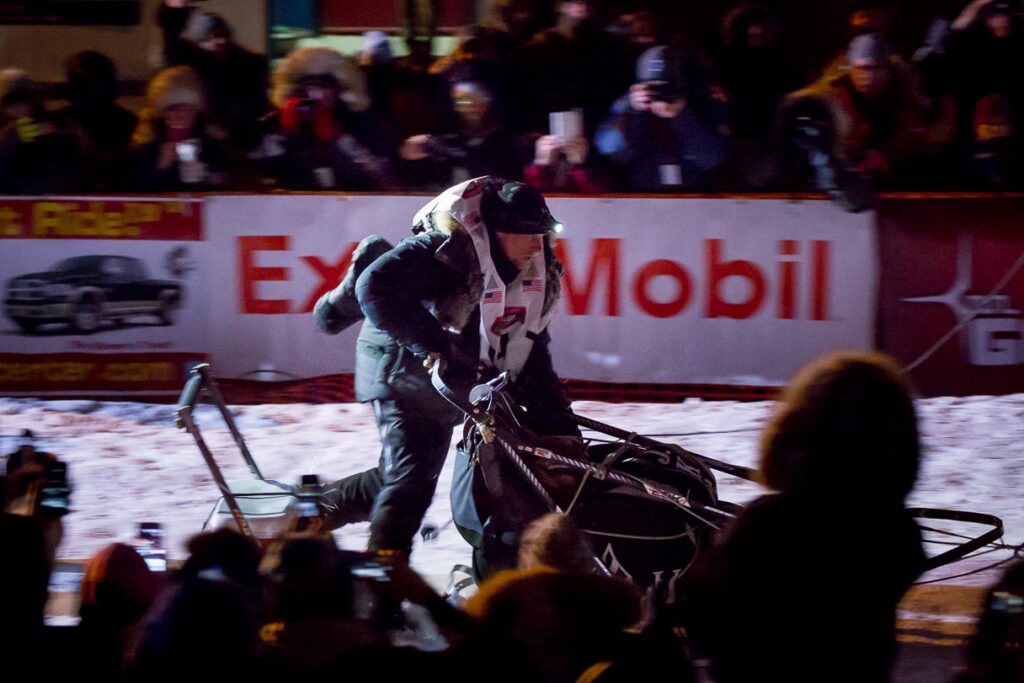With Iditarod 42’s leaders now well into the Norton Sound coast checkpoints, it’s time to break out the calculator. It’s far too early to predict a champion, but how about when the championship finish might happen?
As with every year, let’s get a big caveat out of the way: this is a race, of course, which means that anything could happen in the 100+ miles left between the current leaders and the Nome finish line.
That having been said, the split-times of Iditarod 2014 clearly show the race to be a fast one; musher after musher – including, most recently, Pete Kaiser in Unalakleet – have talked about the exceptionally fast trail in 2014. At the time of writing, the race leaders’ times in and out of Shaktoolik – and, as of the 2pm hour, into Koyuk – are very early. If these trends continue, when might a finisher be in Nome?
Going off of Iditarod’s extensive archive data – specifically, the split times of the race champions in years 2006 through 2012 – let’s look at the time it took the eventual champions to reach Nome after leaving Shaktoolik. (Strangely, the Shaktoolik–Nome split time seems to be unavailable for Mitch Seavey in 2013.) The split times are as follows (again, these are Shaktoolik OUT to Nome IN times):
- Jeff King, 2006: 43 hours, 49 minutes
- Lance Mackey, 2007: 41 hours, 27 minutes
- Lance Mackey, 2008: 44 hours, 49 minutes
- Lance Mackey, 2009: 54 hours, 41 minutes
- Lance Mackey, 2010: 43 hours, 59 minutes
- John Baker, 2011 (the current record for fastest Iditarod run): 40 hours, 6 minutes
- Dallas Seavey, 2012: 48 hours, 51 minutes
Averaged-out, these seven years of mushers traveled from Shaktoolik to Nome in 44 hours, 32 minutes, and if you apply that to the current times out of Shaktoolik – Aliy Zirkle out at 7:12am, Jeff King out at exactly 8:00am this morning – we might expect the first musher, whomever it will be, sometime around 3:00am Tuesday morning.
Of course, that’s with an average of recent Shaktoolik–Nome run times, and this is hardly an average year in terms of speed. With faster runs, it seems quite possible that a musher might make it to Nome around midnight or 1:00am Tuesday.
If that happens, it’d break the record for the fastest Iditarod finish.
At the same time, if the mushers find the trail difficult or need further rest up the Norton Sound coast – or if any of dozens of other variables come into play – the arrival could be delayed. Again, even with only a day and a half left to go, anything can still happen.
But for now, a ballpark arrival for the first Iditarod team of overnight Monday into early Tuesday seems quite possible.
As of 3:45pm Sunday, the current two race leaders – Aliy Zirkle and Jeff King – are both into Koyuk, having arrived a minute apart, at 2:07 and 2:08pm, respectively. Zirkle has 11 dogs, King 12.







